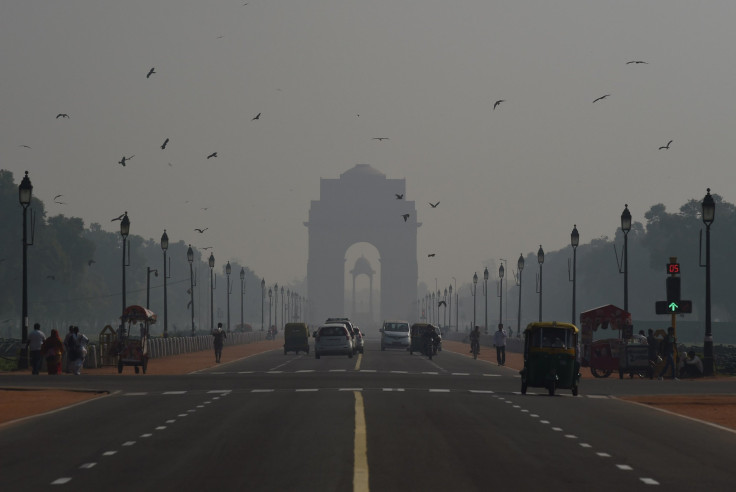New Delhi Pollution: As Beijing Declares Red Alert, Smog Continues To Choke The Indian Capital

On Monday, when authorities in Beijing issued their first-ever “red alert” for pollution, the U.S. embassy’s Air Quality Index (AQI) figures for the city stood at 256 -- putting the level of harmful microscopic PM2.5 particles at 206 micrograms per cubic meter. On the same day, the Indian capital of New Delhi recorded a reading of 286, corresponding to a PM2.5 level of nearly 230 micrograms per cubic meter.
The World Health Organization said last year that the Indian capital, home to nearly 26 million people, had the most polluted air of the nearly 1,600 cities it studied across the globe. However, while the PM2.5 concentration in New Delhi has crossed 300 micrograms per cubic meters -- a level classified as “hazardous” -- several times over the past week, the city lacks a Beijing-like provision for issuing pollution related emergency alerts to its citizens.

“Alarming trends in air pollution levels in the capital city and its devastating impacts on public health have made the city desperate for urgent solutions,” Anumita Roychowdhury, the executive director of the New Delhi-based nonprofit Centre for Science and Environment, said, in a statement released last week, adding that air pollution-related diseases were killing at least one person every hour in New Delhi.
On Friday, in what was slammed by many as a “knee-jerk” response to criticism over failing to act on air pollution, the local government said it will place temporary traffic restrictions on private vehicles in the city, allowing vehicles with odd and even registration numbers to ply on alternate days.
“Whether we’ll run it for two weeks, three weeks, let us see how it rolls out,” K.K. Sharma, the chief secretary of Delhi, told reporters Friday. “We will announce that as and when it’s finalized. But right now, our efforts will be to make it functional from the first of January.”
New Delhi has 9 million registered vehicles, of which nearly 8.5 million are private. While the government has promised to boost the public transport infrastructure in the city and improve last mile connectivity from the metro stations to its sprawling neighborhoods, many remain skeptical.

“Today the metro is overflowing and buses are also not there in enough numbers, so has the government thought of alternative arrangements?” P.C. Chacko, a member of the opposition Indian National Congress party, reportedly said. “This government has not done a single thing to improve public transport system of Delhi. They have taken a decision but they have not considered the adequate alternative arrangements.”
Emissions from coal-fired power plants are yet another source of toxic smog enveloping Indian cities, including New Delhi. While China has, in recent years, reduced its dependence on coal, India still relies heavily on it to fuel domestic power production. As a result, 13 of the world’s 20 most polluted cities are in India -- a situation that’s likely to worsen as the country’s coal output continues to increase.
“Delhi should be a wake-up call for the rest of the country. Ignoring others or passing the pollution to neighboring states will be self-defeating,” Ritwick Dutta, an environmental lawyer, told the BBC, referring to the practice of “exporting pollution” to New Delhi’s neighboring states and cities.
© Copyright IBTimes 2024. All rights reserved.






















